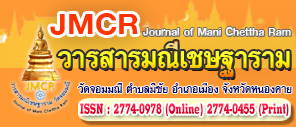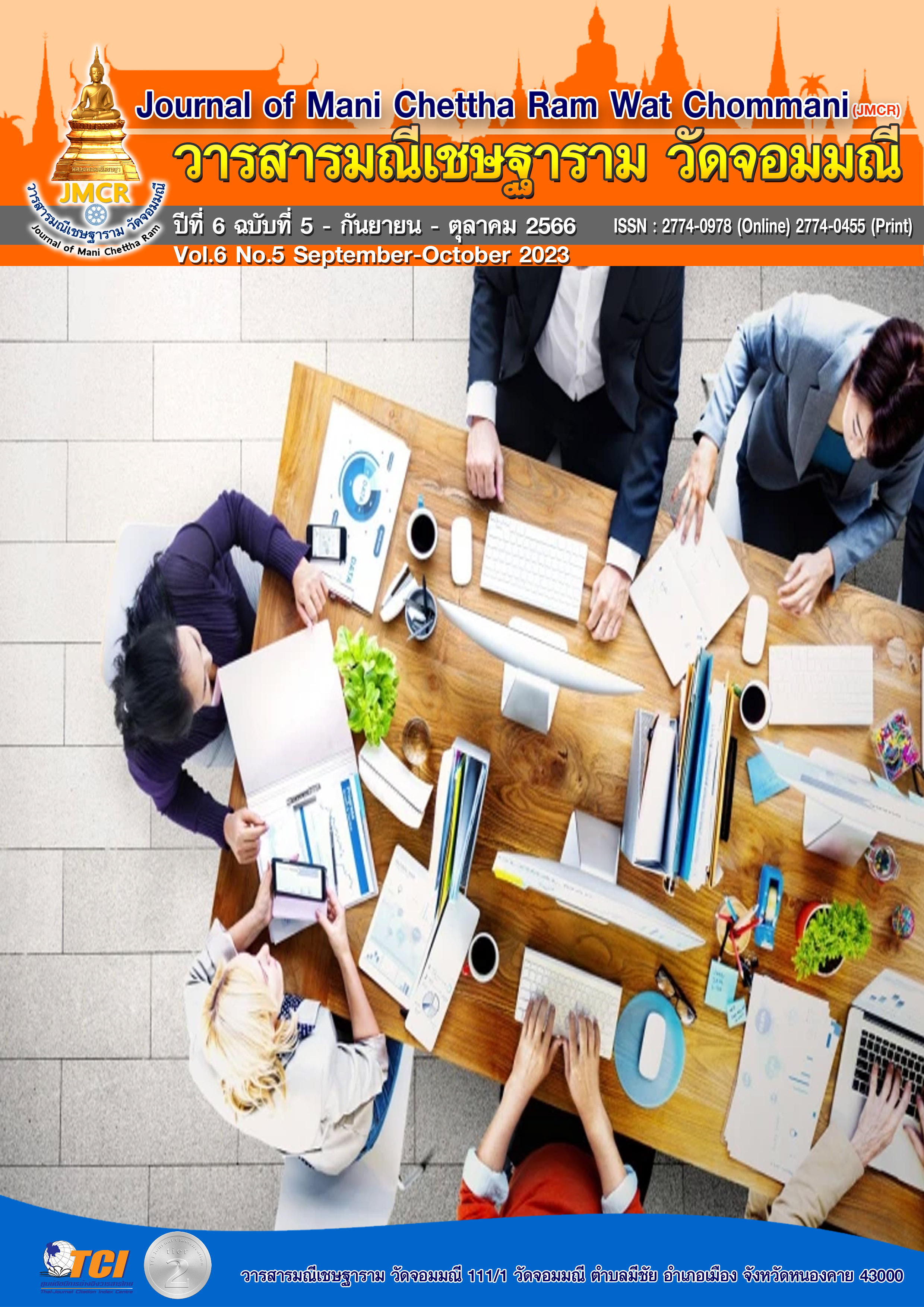GUIDELINES FOR SUSTAINABLE COMMUNITY TOURISM MANAGEMENT IN THAM RONG SUBDISTRICT, BAN LAD DISTRICT, PHETCHABURI PROVINCE
Keywords:
Management, Tourism, Community Life, SustainabilityAbstract
This research aimed to study 1) level of sustainable community tourism management. 2) factors in tourism that have cause-effect relationships with sustainable community tourism management. 3) guidelines for developing sustainable community tourism management. The sample groups used in the study were government, private, public, and tourists. who are stakeholders and involved in sustainable community tourism management practices, Tham Rong Subdistrict, 380 people, obtained by setting a quota size and coincidentally and 8 key informants. They were selected by purposive sampling. The instrument for collecting data were questionnaire and interview form. Analysis data by Descriptive statistics were frequency percentage, mean, standard deviation, chi-square, multiple regression analysis and Content Analysis.
The research results were found as follows; 1) Tourism management based on sustainable community methods is at a high level 2) Gender, age, education level, occupation, monthly income, status, and work experience. It has a relationship with sustainable community tourism management. Statistically significant at the 0.001 level. 3) factors in tourism Activities and exhibitions and packages available and intermediaries linking the services of tourist attractions. There is a cause-effect relationship. with sustainable community tourism management Statistically significant at the 0.001 level.4
3) Guidelines for developing sustainable community tourism management. It was found that communities should set clear rules to create discipline for everyone. There should also be more cooperation between various agencies and the public. To find a way to develop tourism systematically Learning takes place on the same set of information from community scholars. Distributed to schools in the subdistrict to pass on to children.
References
กฤษณ์ จุฑามณี. (2564). การจัดการการท่องเที่ยวอย่างยั่งยืนของชุมชนริมคลองประเวศฝั่งเหนือ กรุงเทพมหานคร. ใน การค้นคว้าอิสระวิทยาศาสตรมหาบัณฑิต สาขาการจัดการสิ่งแวดล้อม. สถาบันบัณฑิตพัฒนบริหารศาสตร์
กุลจิรา เสาวลักษณ์จินดา. (2555). การมีส่วนร่วมของชุมชนต่อการจัดการแหล่งท่องเที่ยว กรณีศึกษา อำเภออินทร์บุรี จังหวัดสิงห์บุรี. ใน การค้นคว้าอิสระบริหารธุรกิจมหาบัณฑิต. มหาวิทยาลัยเทคโนโลยีราชมงคลธัญบุรี.
ธง คำเกิด, อุทุมพร เรืองฤทธิ์, เพียงฤทัย เสงี่ยมศิลป์, จิตราภรณ์ เถรวัตร และชิดชนก มากจันทร. (2563). การจัดการท่องเที่ยวโดยชมุชนบนฐานรากวิถีชีวติชุมชนอย่างยั่งยืน ของตำบลต้นตาล อำเภอสองพี่น้อง จังหวัดสุพรรณบุรี. สุพรรณบุรี: คณะศิลปศาสตร์ มหาวิทยาลัยเทคโนโลยีราชมงคลสุวรรณภูมิ ศูนย์สุพรรณบุรี.
พจนา สวนศรีและสมภพ ยี่จอหอ. (2556). คู่มือมาตรฐานการท่องเที่ยวโดยชุมชน. เชียงใหม่: สถานบันการท่องเที่ยวโดยชุมชน.มหาวิทยาลัยพายัพ.
เพ็ชราภรณ์ ชัชวาลชาญชนกิจ. (2564). องค์ประกอบการท่องเที่ยวที่มีอิทธิพลต่อภาพลักษณ์การท่องเที่ยวเชิงสุขภาพของจังหวัดระนอง. ใน วิทยานิพนธ์ศิลปะศาตรมหาบัณฑิต สาขาวิชาการจัดการท่องเที่ยว คณะการท่องเที่ยวและการโรงแรม. มหาวิทยาลัยธุรกิจบัณฑิต.
เมืองเพชรบุรี. (2566). เครือข่ายการเรียนรู้. เรียกใชเมื่อ 18 มีนาคม 2566 จาก https://www.phetchaburicreativecity.com/th/networkinglearning.
สุดถนอม ตันเจริญ. (2561). การจัดการการท่องเที่ยวโดยชุมชนกับการพัฒนาการท่องเที่ยวอย่างยั่งยืนของชุมชนบางขันแตก จังหวัดสมุทรสงคราม. วารสารวิชาการมหาวิทยาลัยราชภัฏเพชรบุรี, 8(2), 32-41.
สุดถนอม ตันเจริญ. (2560). การจัดการการท่องเที่ยวโดยชุมชนกับการพัฒนาการท่องเที่ยวอย่าง ยั่งยืนของชุมชนบางขันแตก จังหวัดสมุทรสงคราม. วารสารวิชาการการท่องเที่ยวไทยนานาชาติ, 13(2), 1-24.
Strydom, A. J., Mangope, D. & Henama, U. S. (2018). Lessons learned from Successful Community-Based Tourism Case Studies from the Global South. African Journal of Hospitality, Tourism and Leisure, 7(5), 1-13.
Yamane, T. (1973). Statistics: An Introductory Analysis. 3rd ed. Singapore : Harper International Editor.



